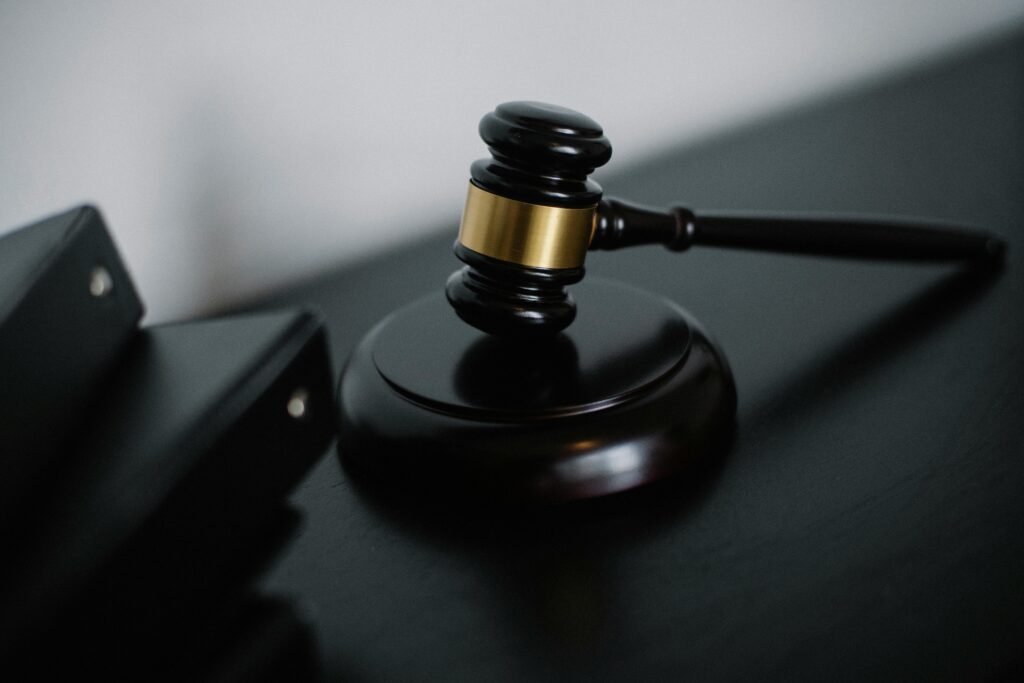Introduction
Long hours drafting briefs, high-stakes negotiations, courtroom adrenaline, and the relentless pressure to win cases—legal professionals know stress all too well. Mindfulness for lawyers offers a powerful toolkit to stay present, manage difficult emotions, and enhance decision-making under pressure.
Yet, paradoxically, tuning into your inner experience can sometimes amplify self-criticism or grief over past losses. In this comprehensive guide, we’ll unpack both the benefits and challenges of incorporating mindfulness into legal practice. You’ll find real-life attorney stories, practical techniques designed for the busy law professional, and dedicated Q&A and FAQ sections to address your top concerns. Whether you’re a junior associate, partner, or in-house counsel, you’ll leave with concrete strategies to advocate more effectively—and care for your well-being in the process.
1. The High-Pressure World of Law Practice

Lawyers face unique stressors:
- Billable Hour Targets: Every minute counts toward profitability metrics, creating relentless time pressure.
- Emotional Labor: Managing clients’ fears, disappointments, and high expectations takes an emotional toll.
- Adversarial Settings: Courtroom confrontations, opposing counsel tactics, and judge scrutiny fuel anxiety.
- Ethical Weight: The responsibility of upholding justice and client confidentiality adds moral pressure.
Positive Aspect: Legal work can be deeply fulfilling when you secure justice or protect rights.
Negative Aspect: Chronic stress leads to burnout, sleep disturbances, and impaired judgment.
2. Embracing Mindfulness for Lawyers in High-Stakes Environments

Mindfulness for lawyers means cultivating nonjudgmental awareness of your thoughts, emotions, and bodily sensations—especially in tense moments. It involves:
- Present-Moment Focus: Noticing when your mind drifts to “What if we lose?” or “I should have prepared better.”
- Emotional Regulation: Acknowledging frustration or fear without reacting impulsively—whether writing a motion at midnight or pacing before a hearing.
- Intentional Response: Choosing to pause and breathe before responding to a client’s emotional outburst or an opposing counsel’s provocation.
3. The Benefits of Mindfulness in Legal Practice
3.1 Sharpened Cognitive Clarity
- Example: Senior associate Priya used brief breathing pauses before drafting clients’ demand letters. She reports fewer drafting errors and more persuasive arguments, attributing it to a clearer mind.
You can know some other beenefits of mindfulness in legal practice by AMERICANBARASSOCIATION.
3.2 Improved Client Relations
- Mindful listening—truly centering on clients’ concerns without planning your rebuttal—builds trust and reduces miscommunication.
- Example: Defense attorney Jason paused mid-consultation to note his racing thoughts, then refocused on the client’s words, uncovering key facts that strengthened the defense.
3.3 Enhanced Resilience Under Pressure
- A brief body-scan during midday breaks helps dissipate tension accumulated from depositions or courtroom appearances, reducing end-of-day fatigue.
- Example: Partner Leena, after grueling trial days, practiced a two-minute desk body scan, which improved her sleep and allowed her to return to court fresh.
3.4 Heightened Ethical Awareness
- Mindfulness fosters self-awareness, helping you recognize when personal bias or emotional reactivity might influence legal judgment. This leads to more balanced, ethically sound advocacy.
4. Key Techniques in mindfulness for lawyers

4.1 The “Pre-Plea” Breath Pause
- How to Do It: Before entering a courtroom or meeting with a judge, take three slow breaths—feeling the feet on the ground, hands on the lectern—and let go of extraneous thoughts.
- Why It Works: Creates a mental buffer, reducing anxiety and improving presence during arguments.
4.2 Micro Body Scan at the Desk (1–2 Minutes)
- How to Do It: Close your eyes (if private) or soften your gaze. Quickly scan from top of head to toes—notice jaw tension, shoulder tightness, or gripping of pens—and release as you exhale.
- Why It Works: Interrupts the sympathetic “fight-or-flight” response, combats physical stress, and refreshes mental energy.
4.3 Mindful Email Composition
- How to Do It: Before drafting a strongly worded email to opposing counsel or a heated client, pause for two breaths. Notice emotional tone, then adjust language for calm professionalism.
- Why It Works: Prevents hasty communications that can damage reputations and relationships.
4.4 Walking Meditation Between Hearings
- How to Do It: On the way from chambers to the courtroom, walk slowly for one minute—observe each step, the feel of your shoes, ambient sounds, and the sensation of air on your face.
- Why It Works: Provides a mental reset, improves focus, and reduces pre-hearing jitters.
4.5 Loving-Kindness Reflection After Tough Days
- How to Do It: At day’s end, sit quietly for one minute and repeat silently:
- “May I acknowledge my efforts today.”
- “May I learn from my challenges.”
- “May I treat myself with compassion.”
- Why It Works: Counters harsh self-criticism, restores motivation, and cultivates self-care.
5. Integrating Mindfulness into Your Legal Workflow
- Anchor to Repetitive Tasks: Pair micro-practices with routine legal duties—before hourly billing entries, at the start of client calls, or after transcript reviews.
- Use Visual Cues: Place a small gavel-shaped paperweight or a sticky note reading “Breathe” on your desk to prompt mindful moments.
- Leverage Technology: Set gentle alarms on your work calendar labeled “Mindful Pause” to remind you to practice micro-breaks.
- Peer Accountability: Partner with a colleague to exchange daily mindfulness check-ins—sharing which technique you used and its impact.
6. Real-Life Lawyer Stories
- Corporate Counsel’s Revelation: Meera, in-house counsel for a tech firm, faced constant crisis calls. She introduced a two-breath ritual before each crisis huddle. Within weeks, her team reported more concise strategies and fewer reactive decisions.
- Public Defender’s Calm Under Fire: During a high-profile case, defense lawyer Raghav struggled with media scrutiny. He adopted nightly body scans between research sessions. The practice reduced his anxiety, enabling clearer legal reasoning under the spotlight.
Q&A Section
- Q: Can mindfulness replace traditional legal stress-management programs?
A: No—mindfulness complements other support like peer supervision, therapy, or wellness workshops. It’s one tool in a broader self-care toolkit. - Q: How long until I see benefits in my legal practice?
A: You may notice immediate calm after micro-practices. Sustained improvements in focus, error reduction, and resilience often build over 2–4 weeks of consistent practice. - Q: What if mindfulness makes me more aware of my mistakes?
A: Initial self-awareness can feel uncomfortable. Pair mindfulness with self-compassion techniques—recognize mistakes as learning opportunities rather than personal failures. - Q: Are there specific mindfulness apps for lawyers?
A: While no apps cater exclusively to lawyers, general mindfulness apps (e.g., Headspace, Calm) offer brief guided sessions that fit legal workflows—look for “work break” or “focus” modules. - Q: How can busy partners with jam-packed schedules fit mindfulness in?
A: Start with micro-practices under two minutes—like the Pre-Plea Breath Pause. Even in packed calendars, these moments compound into significant stress relief over time.
FAQ Section
- What equipment do I need?
None—just your attention and intention. A timer or mindfulness reminder app is optional. - Is a quiet room required?
No—micro-practices are designed for any setting: chambers, court lobbies, or office cubicles. - Can mindfulness sessions be billable?
Only if your firm supports wellness breaks. Generally, micro-practices are non-billable but enhance the quality of your billable work. - Will mindfulness reduce my productivity?
Short pauses under one minute rarely impact workload—and improved focus often boosts efficiency, reducing time spent on revisions or corrections. - How do I measure success?
Track subjective indicators (reduced anxiety, improved sleep) and objective metrics (fewer drafting errors, higher client satisfaction ratings, better work-life balance).
Friendly Closing Message
Legal practice demands both sharp intellect and emotional stability. Mindfulness for lawyers isn’t about escaping the courtroom—it’s about bringing your fullest presence, compassion, and clarity to every brief, negotiation, and hearing. By weaving micro-practices—whether a Pre-Plea Breath Pause, a quick body scan, or a loving-kindness reflection—into your demanding schedule, you’ll not only perform at your best but also sustain your well-being for the long haul. Choose one technique, try it in your next client meeting or court appearance, and notice how mindfulness transforms both your advocacy and your life. Here’s to more grounded, effective, and compassionate legal practice—one mindful moment at a time!

Pingback: Mindfulness for Retail Workers: How It Enhances Customer Service (Yet Sometimes Clashes with the Hustle) - Calm Within Minutes
Pingback: Mindfulness for Chefs: How It Elevates Your Culinary Craft (Yet Sometimes Amplifies Kitchen Stress) - Calm Within Minutes